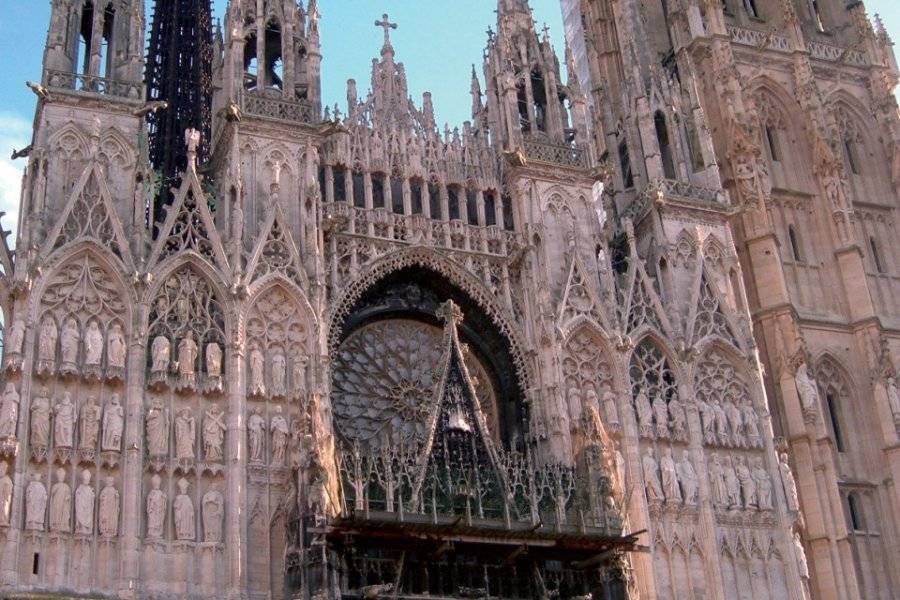A cathedral with an example of Gothic architecture, from the primitive to the flamboyant, featuring a recognizably sculpted façade.
The primatial cathedral of Notre-Dame-de-l’Assomption is a magnificent example of Gothic architecture, from the primitive to the flamboyant, recognizable by its façade sculpted like a stone lace. As the seat of the Archdiocese of Rouen and capital of the ecclesiastical province of Normandy, it retains its archiepiscopal palace and ancillary buildings from the same period. Considered to be the highest church in France, its history dates back to the 4th century, when a cathedral group was built in the center of the city as an affirmation of the new religion. This was followed by a Romanesque cathedral begun around 1020, after the Viking fire of 841 and the baptism of their leader, Rollon, in 912. It was consecrated in 1063, in the presence of Duke William, the future Conqueror. The Gothic style arrived in 1145 with the Saint-Romain tower, and took hold in the 1240s with the choir, the nave, the side chapels, the axis chapel, the western façade, the canons’ cloister, and the Libraires and Calende portals. In 1462, the Saint-Romain tower was completed and, in addition to its nine bells, was fitted with the Marie d’Estouteville and Guillaume bells. In 1479, the Libraires staircase was built, leading from the transept to the chapter library, and at the end of 1485, the Beurre tower was added on the south side. On the transept crossing, the lantern tower, built after the Easter fire of 1200, suffered another fire to its spire in 1514, followed by a lightning strike in 1822. The current cast-iron spire, dating from 1876 and standing 151 m high, is currently undergoing a lengthy restoration program scheduled for completion in 2027. Inside, the ambulatory houses the tombs of the Dukes of Normandy. These include Richard the Lionheart, who demanded that his heart be preserved in the crypt, and Mathilde the Empress, the famous "White Lady" of Mortemer, who died in 1167. The crypt, which is said to have housed the Virgin’s relics, is open to visitors. Removed after the bombardments of 1944, nine of the restored paintings, including Saint John the Baptist in the Desert and The Death of Saint Joseph, are now back in their rightful place. The stained glass windows, from the famous Barbe glass workshop, represent a fine example of the history of stained glass, from the 12th century to the present day. The great organ underwent a major restoration in 2019. Immortalized by Claude Monet in a series of 30 paintings, the building was painted by the father of Impressionism from the second floor of the Bureau des Finances (OT) opposite. All year round, guided tours, candlelit evening visits, sound and light shows and concerts are organized.
Did you know? This review was written by our professional authors.
Members' reviews on NOTRE DAME CATHEDRAL
The ratings and reviews below reflect the subjective opinions of members and not the opinion of The Little Witty.





